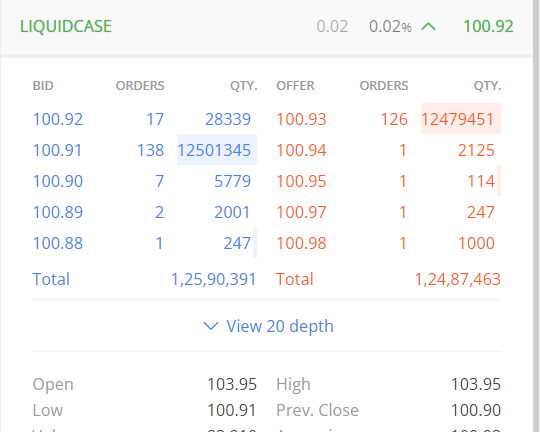Don’t some mutual funds like Sundaram hold futures of stocks?
Or am I misunderstanding your statement
From what I understand Mutual Funds are allowed to hold derivatives only for hedging/arbitrage purpose. So they can buy derivatives only on things where they own the underlying.
TQQQ doesn’t hold any underlying stocks. It’s all made up of deratives only so something like that is not possible in India under current SEBI Regulations.
Sir I want to invest in government stocks what will happen if Congress comes in central power?
Are you planning for target date funds?
I can see you have started with a equity fund, liquid fund and gold fund which forms the base for this.
If yes, it will be a game changer in Indian investing space!
For the uninitiated, a ‘Retirement 2050’ will mature in the year 2050, initially it will have more equity exposure with less debt and gradually debt component will increase gradually and reach max in the year 2050.
example: What is a Target Date Fund (TDF) – Retirement | BlackRock
There are free smallcases with the same theme already
Hey Gowtham, thanks for your feedback. Stay tuned!
@VishalJain , Thanks for the AMA.
Why the need for GOLDCASE. Isn’t SGB a much better option in everyway and recommended by Zerodha as well in multiple times. What’s the reasoning behind the GOLDCASE.
TIA.
@nithin - Would love to hear your thoughts as well.
Gold is an important asset for investors to have in their portfolio as it has negligible correlation with equity and therefore if included can potentially bring down the volatility of one’s portfolio. Each structure whether Gold ETF or SGB will have their own pros and cons. Unlike SGBs, Gold ETFs are fairly liquid, transparent and popular now as they have been in existence in India since 2007. So for a buy and hold strategy, SGB definitely makes better sense than a Gold ETF. However, if one needs liquidity, Gold ETFs are better. You could look at using a combination of both as well. Hope this answers your query.
Hi,
Can I park fund kept in trading account for MTM loss in Liquidcase ETF ?
Incase I need the fund to cover MTM loss, if I sell the ETF, how much % can be used to cover that day MTM loss?
Today LiquidCase Opened at 103.95 and currently trading at 100.92. In case I have bought at 103.95, I would get fewer units and so my return will be less compared to the person bought at 100.92?
If yes how to avoid buying at a higher price?

Hey Ramesh, i suggest to put a “limit order” instead of a “market order” for any ETF as it may take a few seconds for the counter to get populated.
So if I have bought at 103.95, I would get fewer units and so my return will be less compared to the person bought at 100.92?
Or returns are calculated amount invested in the ETF ?
Yes. Hence the best advice is to avoid placing market orders and go for limit orders and if possible, wait for things to settle down in the first 15-30 minutes.
Avoid buying and selling at market open
Most ETFs don’t trade much for 30 mins to 1 hour of the market open. They also tend to trade at abnormal prices because of the low volumes, even orders for a few units can move prices. If you can, avoid trading in the open. And if you have to, check and verify the iNAV and use limit orders
So return is calculated based on number of units or amount invested ?
Just like stocks where dividends are on a per-share basis, ETF returns are based on the number of units held.
Ok, Can I park fund kept in trading account for MTM loss in Liquidcase ETF ?
Incase I need the fund to cover MTM loss, if I sell the ETF, how much % can be used to cover that day MTM loss?
You can, Ramesh.
When you sell your holdings, 80% of the sale proceeds will be available for trading immediately. The remaining 20% will be available from the next day.
80% available for trading immediately means same 80% can be used to cover MTM loss right ?
Yes.
Hello Vishal,
I recently got to know that every fund house can only have one ELSS fund. What are your thoughts on this? I would love for ZFH to launch multiple index funds as ELSS but doesn’t seem to be possible now.
If the one ELSS/fund house rule exists, what was the thought process for choosing LargeMid 250 as the ELSS, instead of something riskier like MidSmallCap or Smallcap only. ELSS fund inherently have a lock-in, and choosing riskier funds seem like the perfect thing to do due to this same lock in. You cannot withdraw due to daily fluctuations, and by the time 3 years are done, you would be used to it and would continue to stay invested.
Since you are from the industry, what kind of tracking error generally exists in index funds in your experience? What might be reasons for it to divert from the actual index’s TRI? AUM, expense ratio play a huge factor in tracking error?